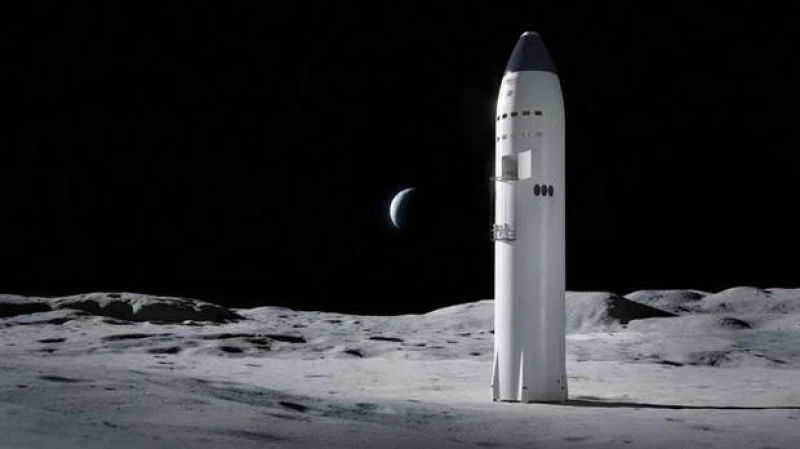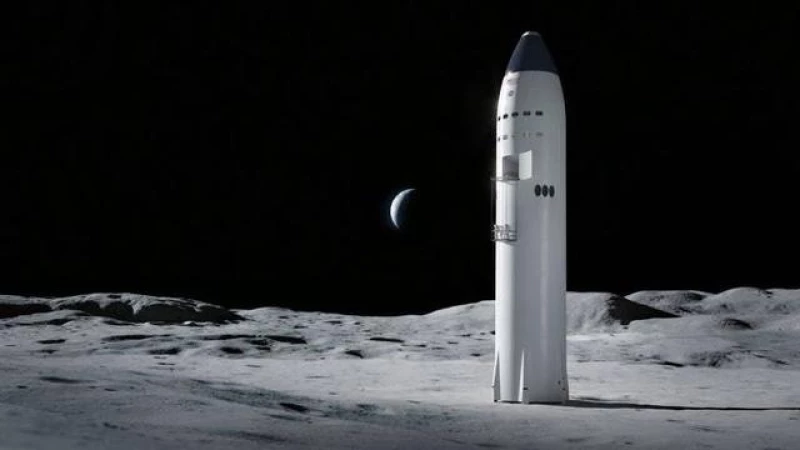Aiming for an ambitious timeline, the first Artemis moon landing is facing setbacks due to delays in SpaceX's moon lander and the development of new Axiom spacesuits, according to NASA. The agency acknowledged that although progress has been made and important milestones have been completed, challenges still persist in the development of the human landing system and spacesuits. As a result, the Government Accountability Office (GAO) has determined that the Artemis III crewed lunar landing is unlikely to occur in 2025.

In an effort to expedite the project, NASA is striving to develop its moon landing system more than a year faster than the average for major projects. However, the complexity of human spaceflight has led experts to deem it unrealistic to expect the program to complete development significantly ahead of schedule. The GAO has found that if the development timeline aligns with the average duration for NASA major projects, the Artemis III mission would likely take place in early 2027.
Artemis III Mission Reassessment
While late 2025 remains the official Artemis III launch target, NASA already was re-assessing the flight schedule. Agency officials have raised the possibility of "repurposing" the Artemis III mission if it turns out a moon landing isn't feasible in the near-term timeframe.
But NASA has not yet announced any such changes.
The Artemis program aims to return astronauts to the moon for the first time since the Apollo program's last lunar landing in 1972. In so doing, the space agency would get there well ahead of China, which plans to land its "taikonauts" on the moon in the 2030 timeframe.
U.S. and partner-agency astronauts will fly to the moon in Lockheed Martin-built Orion capsules launched atop the agency's Space Launch System heavy-lift rocket, built for NASA by Boeing, United Launch Alliance and Northrop Grumman.
An initial, unpiloted around-the-moon test flight — Artemis I — was successfully launched last November and NASA hopes to launch four astronauts on a similar flight, Artemis II, in late 2024 or early 2025.
The Artemis III mission is intended to carry four astronauts to lunar orbit where they will rendezvous with a variant of SpaceX's Starship rocket, known as the Human Landing System, or HLS. Two astronauts then would move into the HLS for descent to the moon's south polar region.
Once on the surface, the first woman and the next man to walk on the moon will use new spacesuits designed by Axiom Space as a commercial venture. Once the initial six-day surface mission is complete, the astronauts would fly back up to the waiting Orion capsule using the HLS.
The HLS is a variant of the commercial Starship upper stage used by SpaceX's Super Heavy rocket. NASA awarded SpaceX a $2.9 billion contract in April 2021 to build the HLS system for the Artemis III flight.
The HLS will use most of its initial load of cryogenic liquid methane and liquid oxygen propellants just getting into Earth orbit after launch atop a Super Heavy booster.
To get to the moon, the HLS must be refueled. SpaceX plans to launch a Starship propellant depot and multiple "tankers" to fill it with the required methane and liquid oxygen.
The HLS vehicle then would attach itself to the depot, take on propellants and then head for the moon to await the Orion astronauts. NASA contract with SpaceX requires one unpiloted lunar landing mission before astronauts launch on the Artemis III mission.
The GAO noted that the initial flight test of the integrated Super Heavy-Starship rocket was delayed by seven months to April. "It was then terminated early when the vehicle deviated from its expected trajectory and began to tumble."
On November 18, a second test flight was conducted, and although the Starship upper stage successfully reached space, an unknown issue triggered its self-destruct system. SpaceX has not provided any details about the problem or when they plan to attempt a third test.
According to the Government Accountability Office (GAO), due to the need for a high number of successful flights to demonstrate reliability and perfect the autonomous refueling systems, a moon landing in 2025 is unlikely. The GAO stated that "SpaceX must complete a significant amount of complex technical work to support the Artemis III lunar landing mission, including developing the ability to store and transfer propellant while in orbit.
"A critical aspect of SpaceX's plan for landing astronauts on the moon for Artemis III is launching multiple tankers that will transfer propellant to a depot in space before transferring that propellant to the human landing system."
The GAO also mentioned that NASA has faced challenges in the development of new moonsuits. Axiom Space of Houston was awarded a $229 million contract last year to continue the development of the moonsuits, but they still need to address issues such as the requirement for an emergency oxygen supply lasting a full hour, supply chain problems, and obsolescence in existing spacesuit elements.
The delivery of the space suit for the mission may be delayed as Axiom representatives are considering redesigning certain aspects of it, according to the GAO.







